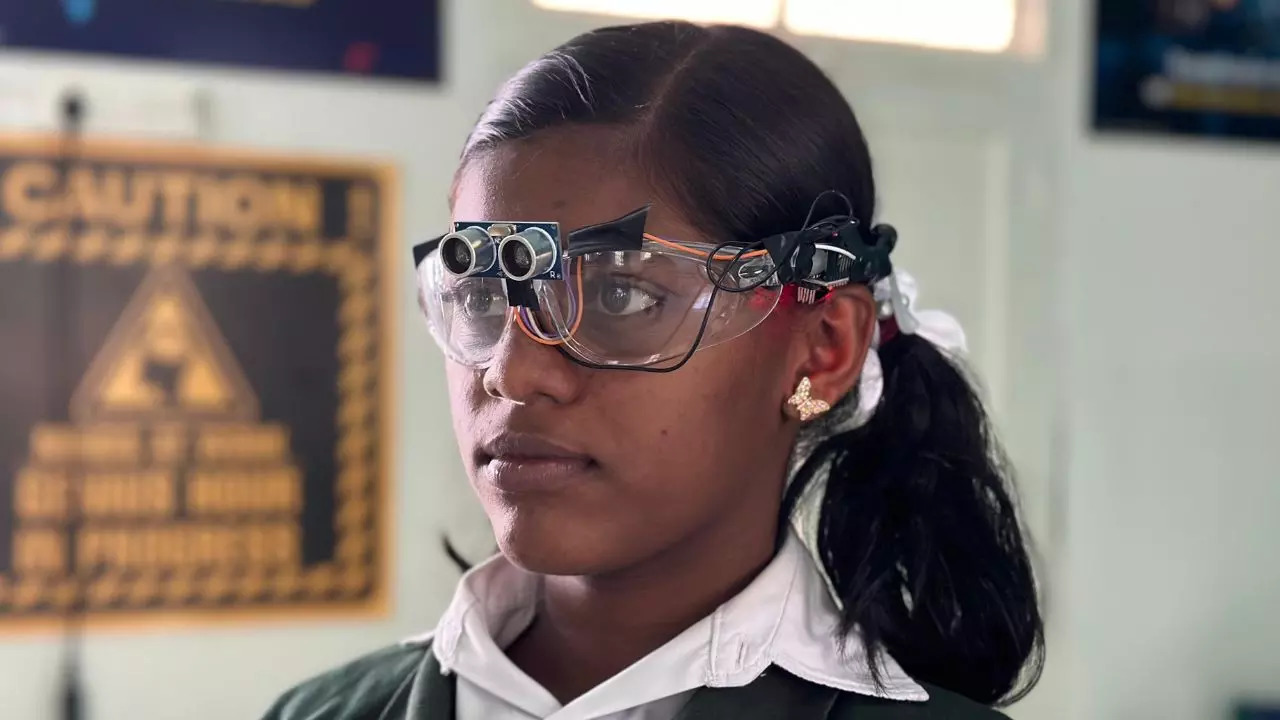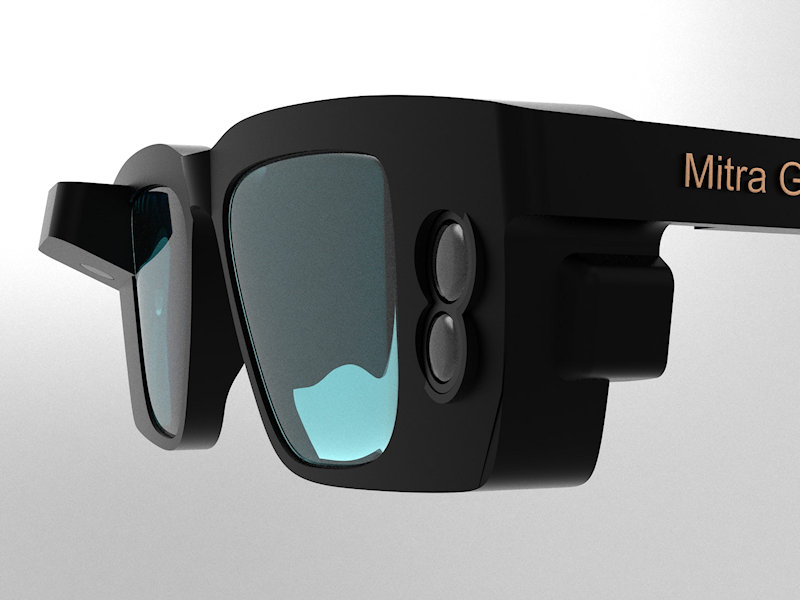How Smart Glasses for the Visually Impaired Are Revolutionizing Daily Life
How Smart Glasses for the Visually Impaired Are Revolutionizing Daily Life
Blog Article
Discover Advanced Assistive Devices for People With Visual Impairments
The landscape of assistive technology for individuals with visual disabilities is progressing rapidly, presenting a series of innovative gadgets that enhance autonomy and interaction (Braille displays and notetakers). From smart glasses that perfectly merge aesthetic input with acoustic guidance to innovative navigating applications that redefine spatial recognition, these tools are reshaping possibilities. Furthermore, the current improvements in Braille innovation and voice-activated systems substantially add to access. Nevertheless, the implications of these growths prolong far past simple functionality; they test standard assumptions of special needs and independence. What might this indicate for the future of addition and assistance?
Smart Glasses Innovations
Smart glasses represent a substantial advancement in assistive technology for individuals with aesthetic impairments. These innovative devices incorporate various features designed to boost the individual's interaction with their setting. Geared up with electronic cameras and sensing units, clever glasses can record real-time aesthetic info, which is then processed and shared to the user through audio feedback or haptic sensations. This capability enables people to receive instant descriptions of their surroundings, boosting their capability to navigate and involve with the world.
Moreover, advancements in artificial intelligence have further enhanced the abilities of smart glasses. Artificial intelligence algorithms can identify faces, read message, and identify items, making them indispensable tools for everyday jobs. Individuals can obtain auditory signs that offer context about their atmosphere, cultivating self-reliance and confidence.
Furthermore, the ergonomic layout and lightweight nature of many clever glasses make them suitable for long term use, making certain comfort while improving capability. As these devices continue to progress, they hold the potential to transform the method individuals with visual impairments experience their every day lives, connecting the gap in between access and modern technology. The recurring r & d in this field guarantee to expand the possibilities for clever glasses, making them a crucial component of modern assistive devices.
Navigation Apps and Devices
Numerous navigating apps and devices have actually become important resources for individuals with visual disabilities, considerably boosting their capability to traverse unknown settings. These technologies leverage GPS performance, audio hints, and real-time data to give customers with accurate navigating support.
One noticeable instance is the Aira app, which attaches users to experienced representatives that can provide visual summaries of environments and navigating assistance through a live video feed. This solution improves the customer's spatial awareness and confidence while navigating. Another noteworthy device is Seeing Eye GPS, which provides voice-guided navigation and sights, allowing customers to accessibility vital info about their surroundings.

As modern technology remains to advance, the advancement of much more sophisticated navigating devices promises to further equip individuals with aesthetic impairments, assisting in seamless movement and assimilation into diverse settings. Such technologies contribute in promoting an extra comprehensive society.
Braille Technology Advancements
Recently, developments in Braille innovation have actually substantially transformed just how people with visual problems gain access to information and engage with the world around them. The advancement of mobile Braille displays has actually transformed reading by allowing individuals to attach wirelessly to tablet computers, smart devices, and computer systems. These devices convert message right into Braille in real-time, making it possible for seamless communication with electronic material.
Moreover, cutting-edge Braille printers have arised, boosting the production of tactile materials. Modern embossers are faster and more reliable, permitting for the rapid development of Braille papers and academic products. This efficiency minimizes the moment and cost connected with generating Braille sources, making them a lot more accessible to organizations and schools.
Additionally, the integration of Braille with various other modern technologies, such as synthetic knowledge and equipment knowing, has actually opened up new methods for tailored learning experiences. Voice acknowledgment and synthesis technologies can complement Braille, supplying an inclusive strategy to info circulation.
As the demand for comprehensive education and learning and office environments grows, these technological advancements play an important function in empowering people with aesthetic problems, ensuring they have equal access to information and possibilities in numerous aspects of life.
Wearable Gadgets for Freedom
An expanding variety of wearable tools is boosting independence for people with aesthetic impairments, using cutting-edge solutions that boost navigating and everyday living. Braille displays and notetakers. These tools use advanced modern technologies to provide real-time feedback and assistance, advertising freedom in various settings

Wearable technology additionally includes smartwatches that can be set with accessibility features, enabling individuals to receive alerts, track their areas, or even call a fantastic read for help with the touch of a button. Some tools incorporate synthetic intelligence to analyze the setting, offering audio descriptions of close-by things or individuals.
Voice-Activated Assistive Solutions
Leveraging voice-activated assistive services has changed the landscape of support for people with aesthetic problems, providing hands-free interaction and accessibility to a variety of tasks. These innovations utilize natural language processing and fabricated knowledge to allow users to perform day-to-day tasks through easy voice commands.

Moreover, recent developments in voice recognition precision have actually boosted the individual experience substantially, suiting diverse accents and speech patterns. This inclusivity makes sure that more people can profit from these modern technologies, fostering a greater feeling of autonomy.
Verdict
To conclude, the advancement of advanced assistive tools substantially boosts the freedom and lifestyle for individuals with aesthetic disabilities. Advancements such as smart glasses, navigating apps, Braille technology, wearable tools, and voice-activated options jointly promote a more comprehensive environment. These modern technologies equip users to browse their environments with confidence and involve even more fully with the globe, ultimately promoting better availability and equivalent possibilities for individuals encountering visual obstacles.
The landscape of assistive modern technology for individuals with aesthetic problems is progressing rapidly, providing an array of innovative gadgets that boost autonomy and interaction.Smart glasses stand for a significant improvement in local eye doctors assistive modern technology for individuals with visual problems. As these gadgets proceed to evolve, they hold the potential to reinvent the method people with aesthetic impairments experience their day-to-day lives, bridging the space between access and technology.In recent years, innovations in Braille modern technology have dramatically transformed how individuals with aesthetic problems access information and engage with the world around them. These modern technologies encourage customers to browse their surroundings with confidence and engage even more fully with the world, ultimately advertising better accessibility and equal opportunities for individuals encountering visual difficulties.
Report this page